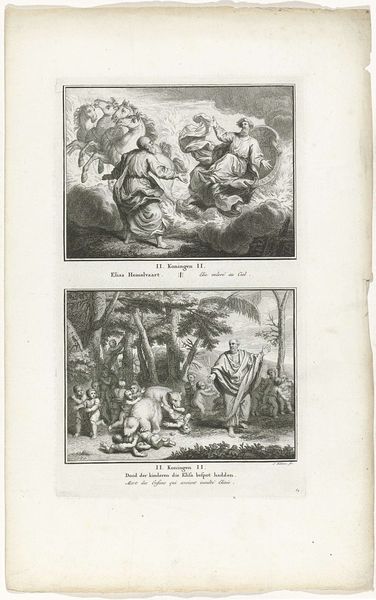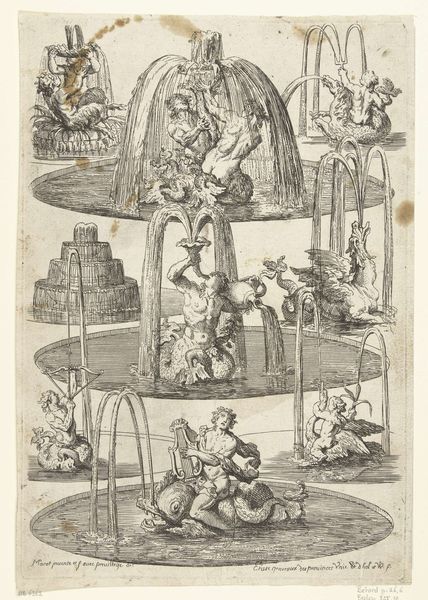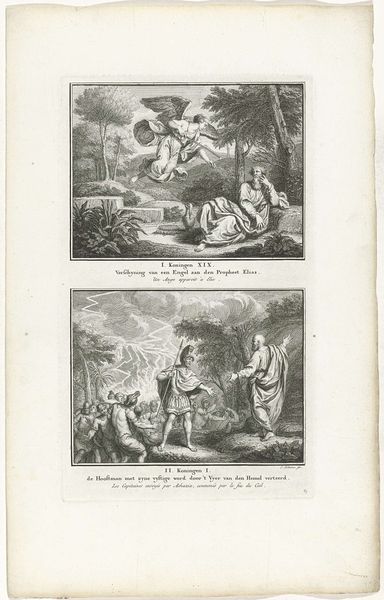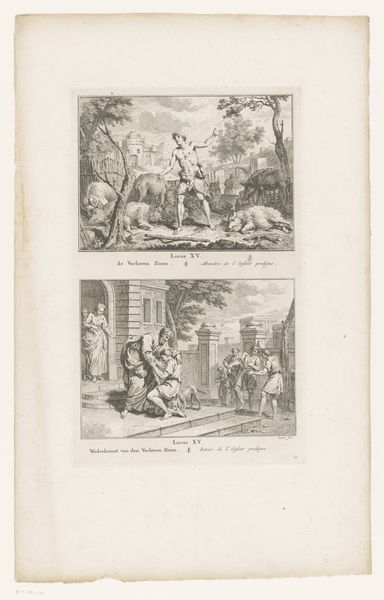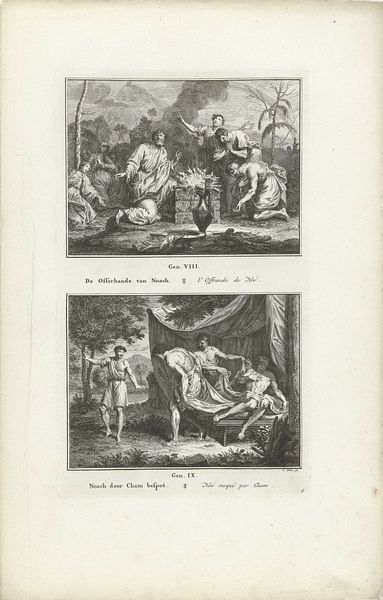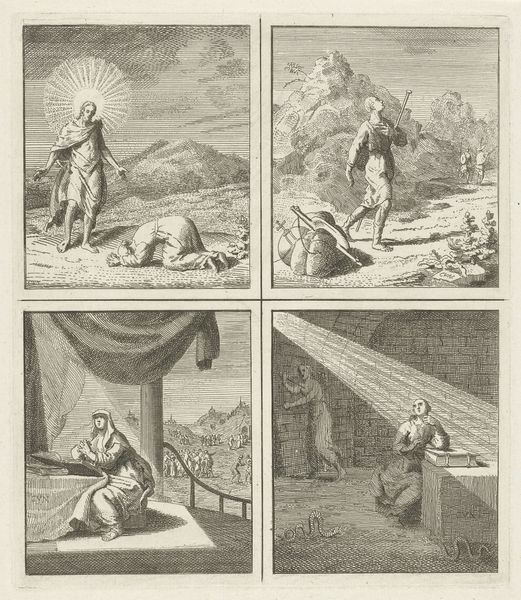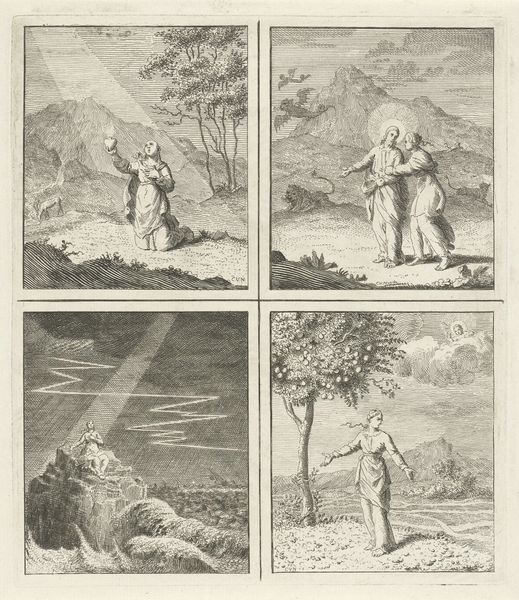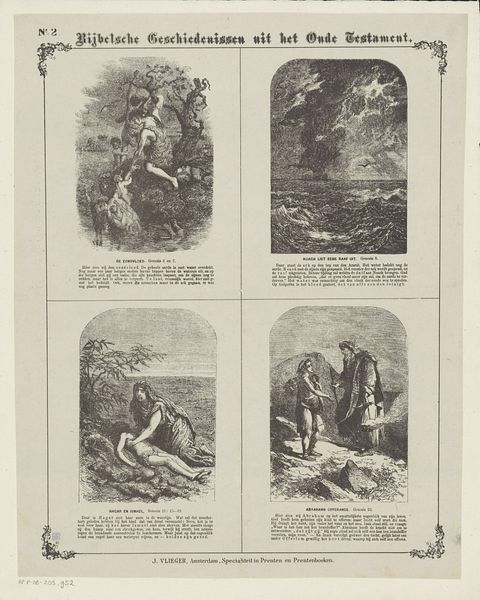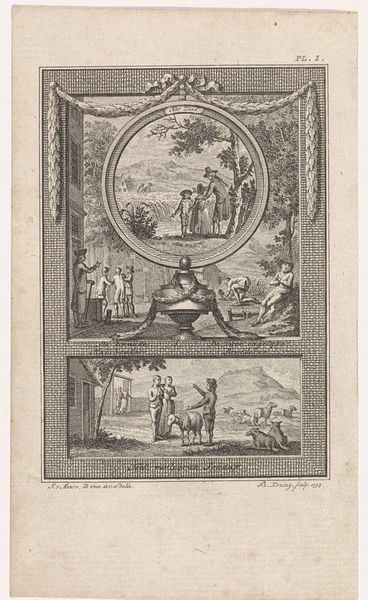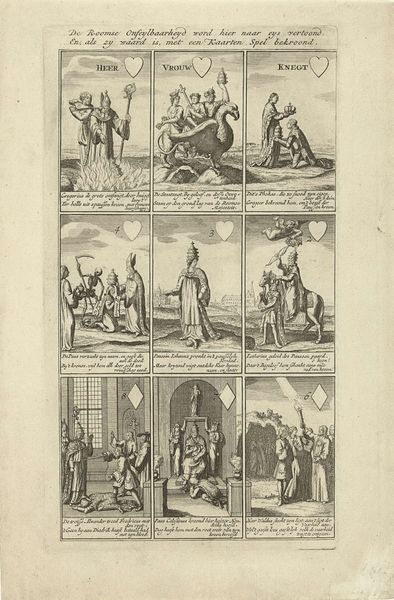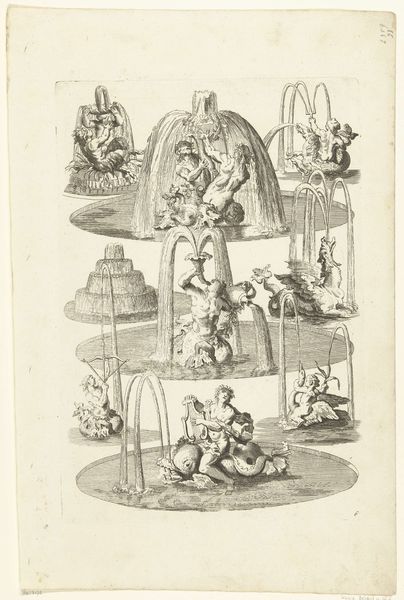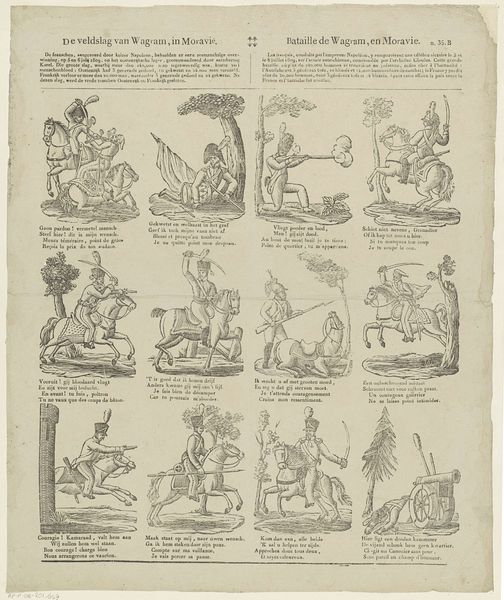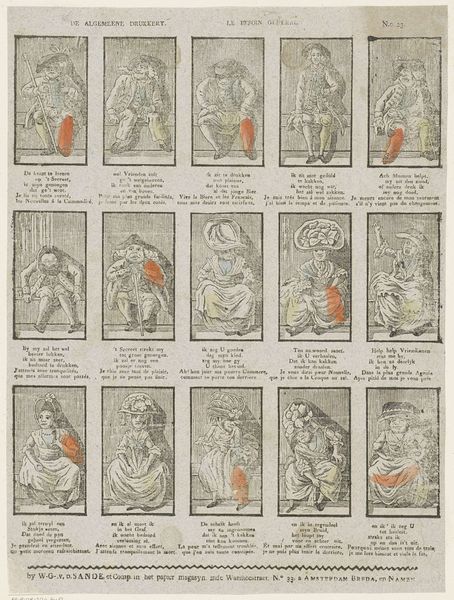
Zie hier naar kunst geschetst, lucht, water, vuur en aarde, / De vier hoofdstoffen, daar natuur door moet bestaan; / Hecht uw begrip met lust, ô teedre jeugd! daaraan, / En ken 'er in al 't geen de groote schepper baarde 1761 - 1804
0:00
0:00
Dimensions: height 413 mm, width 323 mm
Copyright: Rijks Museum: Open Domain
Curator: This print, dating from around 1761-1804, titled *Zie hier naar kunst geschetst, lucht, water, vuur en aarde* is by Erven de Weduwe Jacobus van Egmont. It's an engraving of four allegorical figures, each representing one of the classical elements: earth, air, fire, and water. I can sense a delightful whimsy in the work. It strikes me as both educational and subtly enchanting. What do you see when you look at it? Editor: Well, my first thought is how it’s divided into these neat little vignettes. It's quite orderly, and the cherubic figures feel a bit like characters from a storybook. Each element has its own little scene. Curator: Exactly! Consider the period. We're on the cusp between the Baroque and Classicism. It's an age steeped in allegorical thinking. Everything had a deeper meaning! Notice how each cherub isn’t simply *with* their element, they embody it. Air playfully blowing bubbles, Water fishing, Fire riding a flaming goose, Earth holding forth a bounty of fruits. Editor: The little details, the bubbles for air, the sheaf of wheat for earth, really spell it out, don't they? But also, is the fire one sitting on a *goose*? Curator: (Chuckles) Precisely! And a rather fierce goose at that! It could reference ancient mythologies with the bird relating to themes of vigilance or even wrath, lending complexity to the figure representing fire, so, where do you see the "enchantment"? Editor: Now that I understand more about the cherubs embodying the elements, each of them really stands out. Each captures the feel of the element – Earth a cheerful bountifulness and Fire a sparky terror. So, thank you, that actually helped me "see" the image more clearly. Curator: My pleasure! It's always rewarding to discover how much these older works still speak to us, isn't it?
Comments
No comments
Be the first to comment and join the conversation on the ultimate creative platform.
